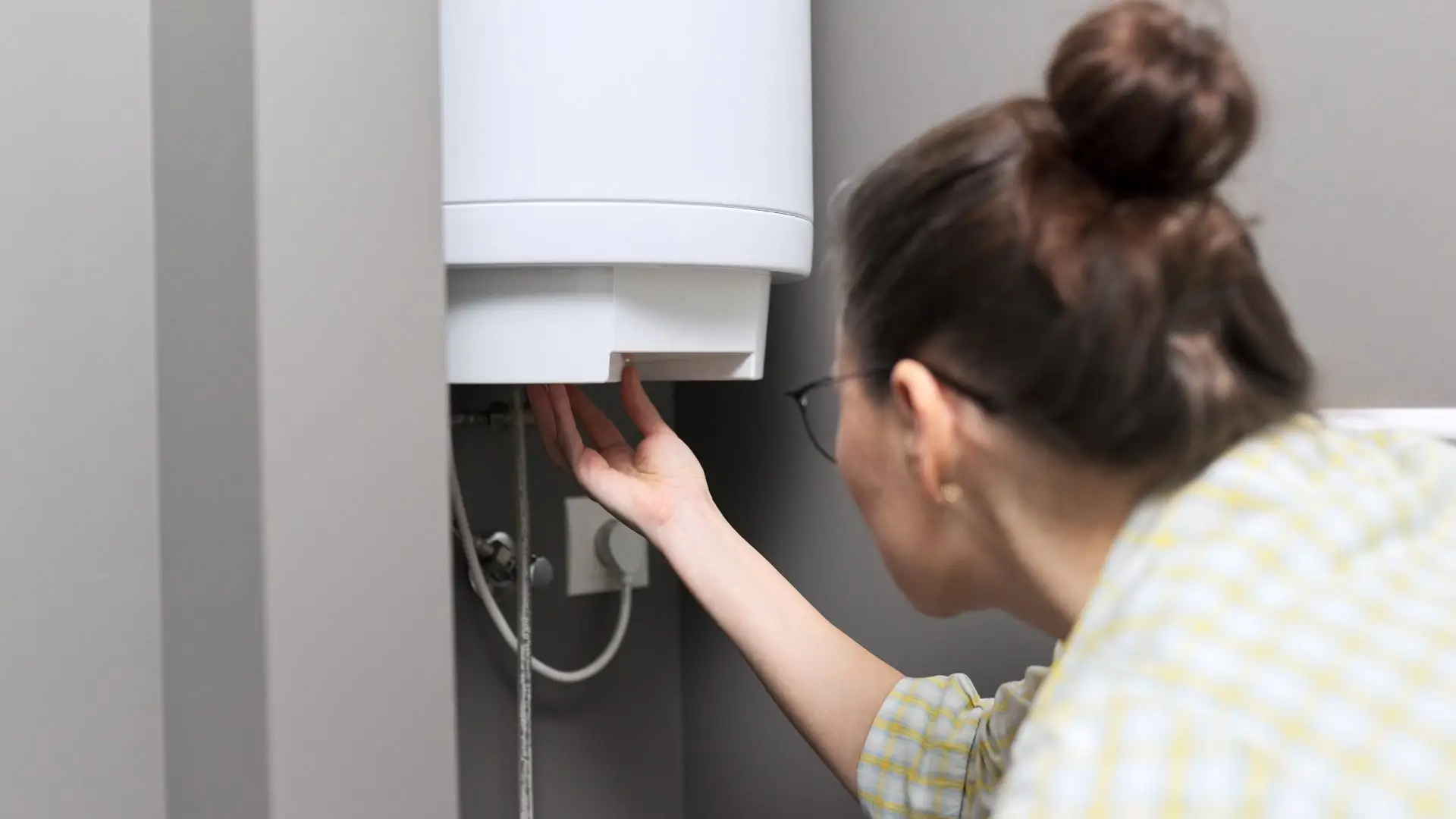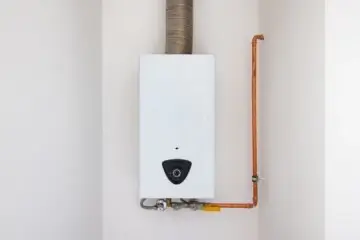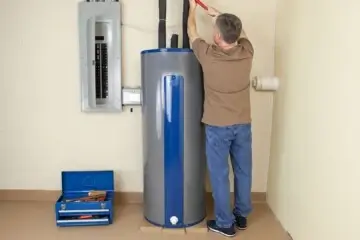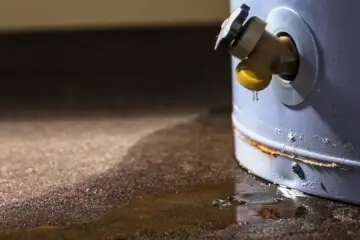When troubleshooting thermostat issues on a hot water heater, it’s essential to locate and understand its purpose to effectively resolve problems. Begin by checking for any power supply issues and ensuring all connections are secure. Carefully adjust the temperature settings to optimize performance. Use a multimeter to test the thermostat functionality after disconnecting the power. If necessary, replace a faulty thermostat following proper safety precautions. Mastering these fundamental steps is crucial for efficiently troubleshooting your hot water heater – for more details to improve your heater’s functionality and lifespan.
Contact CAN Plumbing and Drainage for your Hot Water Heater Needs
If you’re in need of assistance with your hot water heater, look no further than CAN Plumbing and Drainage in Mississauga. When facing issues with your water heater’s thermostat, it’s crucial to have a qualified plumber evaluate the situation. A faulty thermostat can result in problems such as insufficient hot water or water that’s too hot. CAN Plumbing and Drainage in Mississauga specializes in diagnosing and fixing issues with electric water heaters, ensuring optimal performance. Our team of skilled plumbers in Mississauga is fully prepared to address any thermostat-related issues with your water heater promptly and efficiently. Feel free to get in touch with us for all your water heater repair needs. Contact us today!
CAN Plumbing and Drainage Services Related to Hot Water Heaters
At CAN Plumbing and Drainage in Mississauga, we specialize in a range of services related to hot water heaters. Our expertise includes hot water tank installations, replacements, and repairs. Whether you need a new unit set up, an old one swapped out, or a malfunctioning one fixed, our team is here to help.

Hot Water Tank Installations
During hot water tank installations, we focus on precision and efficiency to ensure optimal functionality and performance. A proper installation is essential for the thermostat to operate correctly and regulate water temperature effectively. Electric water heaters, in particular, require accurate installation to maximize the performance of their heating elements and maintain a consistent hot water supply. Our team pays close attention to detail during installation to prevent potential issues with the water tank in the future. We meticulously align the thermostat, check for leaks, and confirm the proper functioning of all components. By adhering to industry best practices during hot water tank installations, we guarantee reliable operation and customer satisfaction.

Hot Water Tank Replacements
At CAN Plumbing and Drainage Services in Mississauga, we specialize in seamless hot water tank replacements. When dealing with an electric hot water heater, issues with the water heater thermostat can cause inconsistent water temperatures. If you suspect a problem with your hot water heater thermostat, it’s important to test it for potential replacement. Our expert technicians are experienced in diagnosing thermostat issues and carrying out efficient repairs. Whether it’s a simple thermostat replacement or a more complex repair, you can trust our team to restore your hot water system to optimal performance.
Hot Water Tank Repairs
At CAN Plumbing and Drainage Services in Mississauga, we specialize in efficiently and effectively repairing hot water tanks to ensure optimal performance of your hot water system. When dealing with hot water tank issues, one key step is to test the water heater thermostat to check if it is functioning correctly. If you are facing problems such as insufficient hot water or fluctuating temperatures, it may indicate a problem with the thermostat. Begin by inspecting the reset button to ensure it is not tripped. If the issue persists, the upper or lower thermostat could be defective and might need to be replaced. Regular maintenance of your water heater, including periodic thermostat checks, is essential to prevent disruptions in your hot water supply. You can rely on our team to promptly and reliably diagnose and resolve any hot water tank issues you may encounter.

Identifying the Thermostat on Your Heater
Identifying the thermostat on your heater is crucial for understanding and troubleshooting its functionality. In an electric water heater, the thermostat is typically located behind an access panel. The thermostat regulates the temperature in the tank by controlling the operation of the upper and lower heating elements. To identify the thermostat, find the access panel on the side of the water heater. Once the panel is removed, you will see the thermostat along with the upper and lower heating elements. Using a multimeter, you can test the thermostat, limit switch, and heating elements for continuity to determine if any components are faulty. Understanding the thermostat’s location and function is essential for diagnosing and resolving issues with your hot water heater efficiently.
Checking for Power Supply Issues
To troubleshoot potential power supply issues with your hot water heater, begin by checking the electrical connections to the thermostat. Start by ensuring that the breaker connected to the water heater is not tripped. Then, carefully inspect the wiring terminals on both the upper and lower thermostat to make sure they are securely connected and undamaged. If the breaker is functioning properly and the terminals are in good condition, use a multimeter to test the power supply reaching the thermostat. If power is reaching the thermostat but the water is not heating, it is likely that the thermostat is faulty and may need to be reset or replaced. By following these steps, you can effectively diagnose and address any power supply issues affecting your hot water heater.
Adjusting the Temperature Settings
Adjust the temperature settings on your hot water heater by carefully turning the thermostat dial to your desired temperature setting. The thermostat control knob allows you to set the water temperature in degrees Fahrenheit. Locate the thermostat on your water heater and adjust the knob to your preferred water temperature. The recommended temperature for heating the water in the tank is typically around 120 degrees Fahrenheit to prevent scalding and ensure energy efficiency. Once you have set the temperature, allow some time for the water heater to adjust and stabilize at the new setting. Regularly monitoring and adjusting the temperature settings can help optimize the performance of your hot water heater.

Testing the Thermostat Functionality
Let’s perform a basic test to confirm the functionality of the thermostat on your hot water heater. To start, ensure that the hot water heater is connected to electric power. Use a digital multimeter and set it to measure resistance. Then, disconnect the power supply to the water heater. Locate the thermostat behind the access panel and test it by placing the multimeter probes on the thermostat’s terminals. If the reading displays infinite resistance, the thermostat is defective and requires replacement. Conversely, a reading close to zero indicates that the thermostat is working correctly. Keep in mind that the thermostat is crucial for regulating the temperature of the heating elements, so accurate testing is essential for efficient hot water production.
Replacing a Faulty Thermostat
When replacing a faulty thermostat on a hot water heater, remember to first disconnect the power supply to the unit to prevent any electrical hazards. To replace the faulty thermostat, begin by turning off the power to the water heater at the breaker. Next, locate the thermostat panel on the water heater and remove the panel cover to access the thermostat. Disconnect the wires attached to the faulty thermostat, noting their positions. Install the new thermostat by connecting the wires to the appropriate terminals. Once the new thermostat is securely in place, replace the panel cover. Finally, restore power to the water heater and test the hot water to confirm the thermostat replacement was successful, restoring proper heating element functionality.
Frequently Asked Questions About Hot Water Heaters Near Me
Can a Faulty Thermostat Cause Other Issues With My Hot Water Heater?
A faulty thermostat can indeed lead to a range of issues with a hot water heater. It can result in inadequate heating, inconsistent water temperatures, or even complete system failure. Regular maintenance and prompt repairs are crucial in preventing such problems.
How Often Should I Have My Hot Water Heater Thermostat Checked or Replaced?
We recommend having your hot water heater thermostat checked on an annual basis. Regular maintenance is essential to ensure optimal performance and to promptly identify any potential issues. If necessary, a professional can replace the thermostat to maintain the efficiency of your system.
Are There Any DIY Methods for Troubleshooting a Thermostat on a Hot Water Heater?
We recommend checking the thermostat for issues like incorrect temperature readings or failure to activate the heating element. DIY troubleshooting methods include testing the thermostat with a multimeter, checking electrical connections, and ensuring proper calibration.
What Are Some Signs That Indicate a Thermostat Problem With My Hot Water Heater?
If a thermostat on a hot water heater is not working properly, you may notice issues such as inconsistent water temperatures, water that is either too hot or too cold, strange noises coming from the heater, or the heater running constantly. It is advisable to seek professional assessment to address these problems effectively.
Are There Any Safety Precautions I Should Take When Working With the Thermostat on My Hot Water Heater?
When working with the thermostat on a hot water heater, it is crucial to prioritize safety. Remember to always turn off the power supply before attempting any adjustments to avoid any accidents. Exercise caution when handling electrical components to prevent shocks or mishaps.
Please rate our website
Let us improve this post!
Tell us how we can improve this post?


